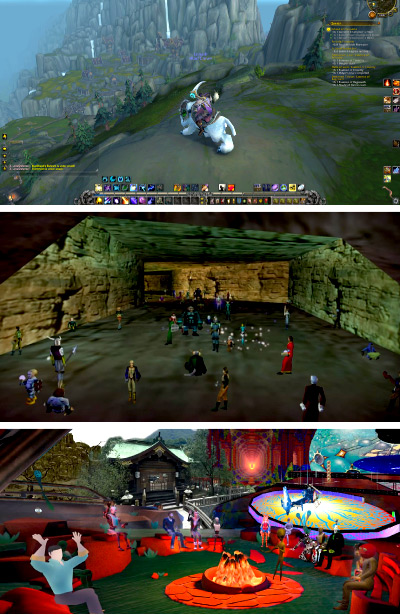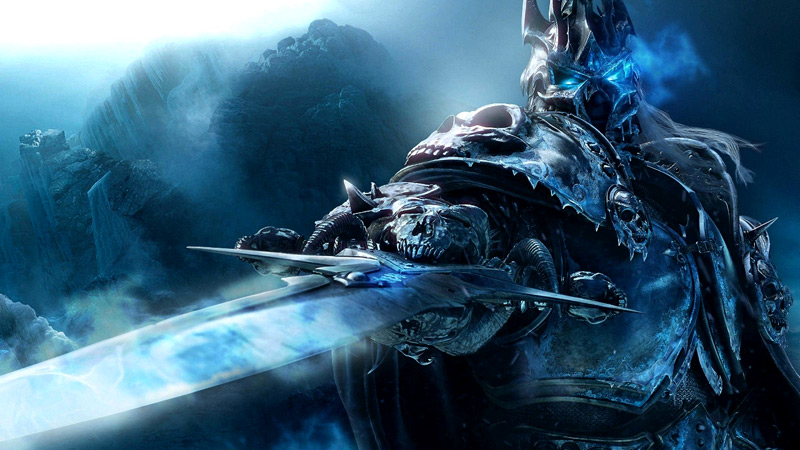Massive Multiplayer Online games, or MMOs as they are colloquially abbreviated, are a genre of video games that allows a large community of players to play with each other online, in a shared virtual world. The scale of these communities can range from hundreds to thousands, and mega-hits such as World of Warcraft support a player base in the millions. Most people who’ve grown up with gaming as children can say they’ve at least dabbled in MMOs at least at some point in their lives, creating fond memories online with friends on games like Runescape, World of Warcraft, or even Club Penguin.
 MMO games are typically characterised by large, persistent worlds where players can explore, compete, and collaborate in real time. MMOs started out as role-playing games heavily influenced by the Dungeons & Dragons TTRPG, which codified RPG as a genre. As a result, the most popular MMOs are typically RPGs, to the point that MMORPG is almost synonymous with MMO. However, MMOs have had many successful games even outside of the RPG genre, such as Second Life, Destiny 2, Sea of Thieves, and the Battle Royale genre that became wildly popular not too long ago.
MMO games are typically characterised by large, persistent worlds where players can explore, compete, and collaborate in real time. MMOs started out as role-playing games heavily influenced by the Dungeons & Dragons TTRPG, which codified RPG as a genre. As a result, the most popular MMOs are typically RPGs, to the point that MMORPG is almost synonymous with MMO. However, MMOs have had many successful games even outside of the RPG genre, such as Second Life, Destiny 2, Sea of Thieves, and the Battle Royale genre that became wildly popular not too long ago.
Roots in the ’70s
 Despite having “online” in the name, MMOs as a genre actually predate the internet and have their roots in the ’70s when multi-user dungeon (MUD) games became popular among early computer users. MUDs had many of the features that would later become hallmarks of MMORPGs, allowing multiple players to interact, explore, and complete quests in a shared virtual world, though this was done entirely through text. It was a pioneering concept, as players could interact with each other in real-time, battling monsters and solving puzzles together.
Despite having “online” in the name, MMOs as a genre actually predate the internet and have their roots in the ’70s when multi-user dungeon (MUD) games became popular among early computer users. MUDs had many of the features that would later become hallmarks of MMORPGs, allowing multiple players to interact, explore, and complete quests in a shared virtual world, though this was done entirely through text. It was a pioneering concept, as players could interact with each other in real-time, battling monsters and solving puzzles together.
As more universities and research institutions gained access to networked computers, these MUD games became a cultural phenomenon among students and programmers. MUDs grew in complexity, and more versions were developed commercially, with each introducing vital new features fuelled by advancements in computer graphics and the expanding internet, setting the foundation for what would eventually become the modern MMO genre. Neverwinter Nights (1991) was the first to introduce graphics, utilising rudimentary sprites to represent players and monsters. Meridian 59, released in 1996, was the first MMO with 3D graphics and is still playable today.
Another landmark title was Ultima Online in 1997, developed by Origin Systems. It introduced many concepts that would become standard in MMOs, such as PvP (player versus player) combat, trade skills, and guilds. The game’s success demonstrated the potential for a subscription-based revenue model, proving that players were willing to pay for continuous online experiences. This potential would be realised in 1999 with the release of EverQuest leading to an explosion in MMO popularity. EverQuest’s massive success set a new standard and would directly influence every major MMO release after it.
Most famous MMO
Perhaps the most famous MMO of all time, World of Warcraft (WoW), was released by Blizzard Entertainment in 2004 and was based on their existing Warcraft series. WoW’s user-friendly gameplay, extensive lore, and quest-driven structure appealed to a broad audience, quickly becoming a cultural phenomenon. At its peak, WoW boasted over 12 million subscribers, proving that MMOs had successfully become mainstream. Its influence led to a wave of similar games aping off its popularity, like Guild Wars, Final Fantasy XIV, and The Elder Scrolls Online, each bringing unique twists to the MMO experience.
MMOs would also diversify in genre and style, branching out of its tried and true fantasy setting with science fiction-based games like EVE Online, which launched in 2003, offering a space-based economy-driven universe, and Star Wars: The Old Republic in 2011, which catered to fans of the Star Wars universe with an emphasis on storytelling.
In recent years, MMOs have shifted towards free-to-play and freemium models, allowing players to access content free but offering in-game purchases for customisations and advantages. Games like Fortnite and Genshin Impact are not traditional MMOs but incorporate MMO elements, blending the lines between genres and attracting massive audiences. VR-based MMOs, such as VRChat and OrbusVR, are experimenting with immersive worlds that provide new levels of player engagement.




